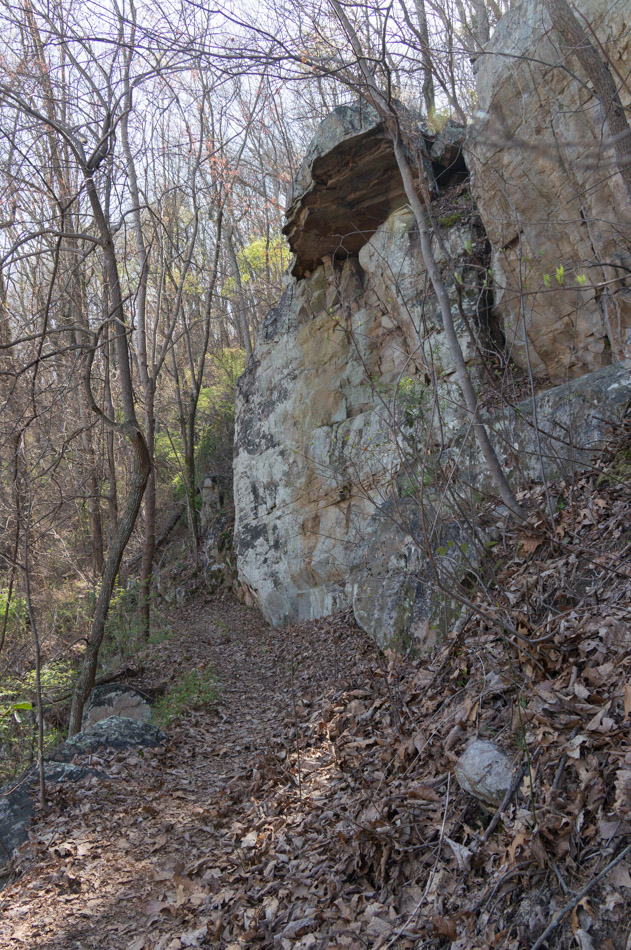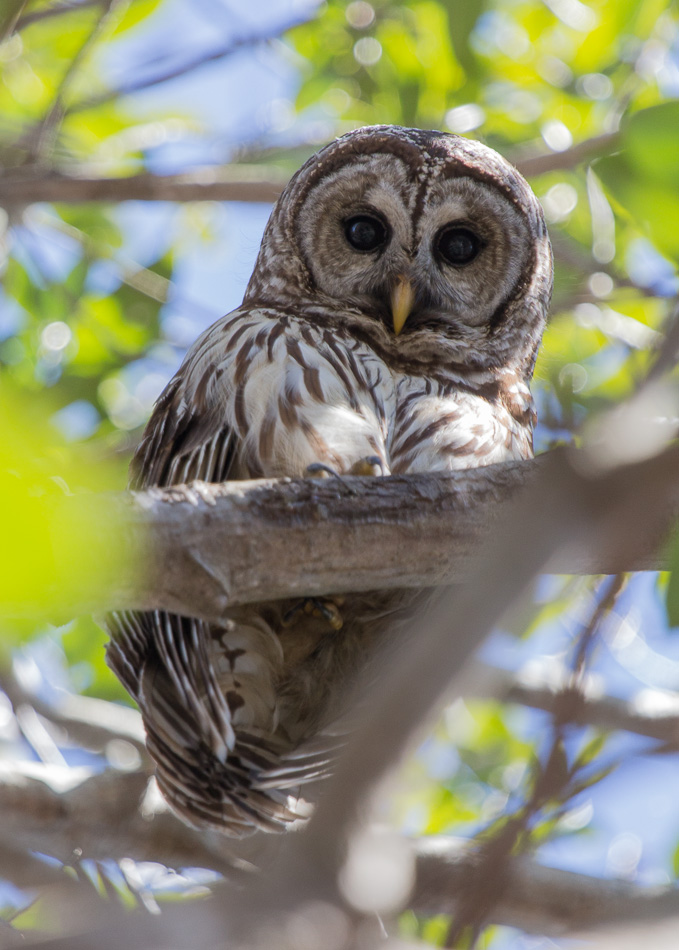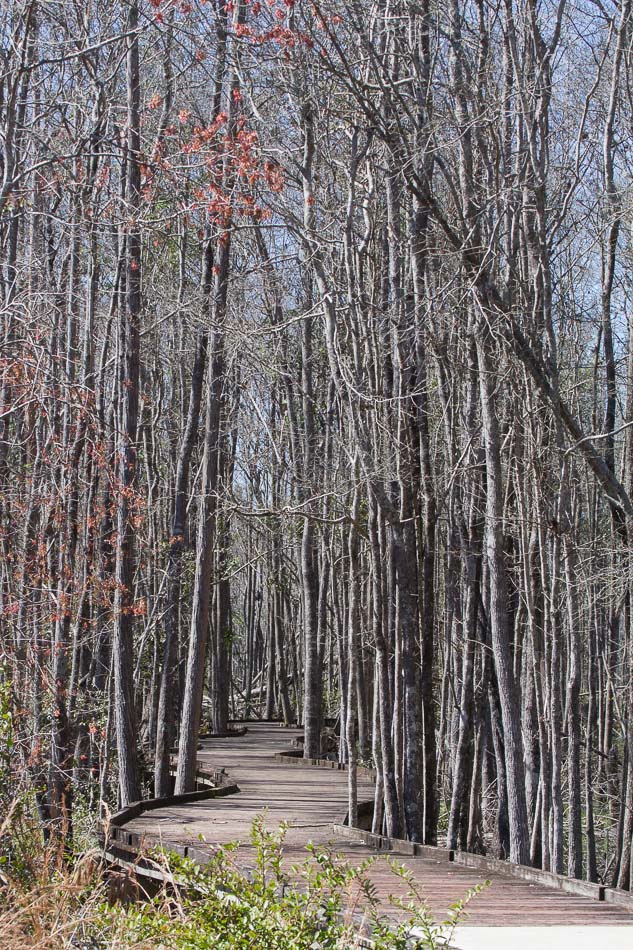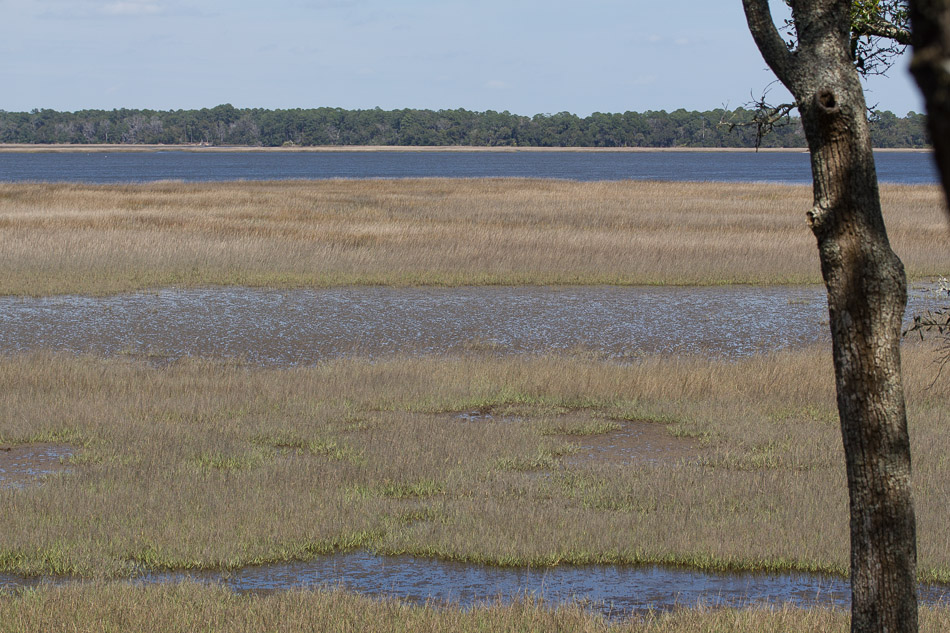State archives: Georgia
In the beginning of April, we followed the winding and narrow road partway up Lookout Mountain, near Chattanooga, to a small pullout with room for about 4 cars to park. The trailhead kiosk is barely visible from the road, as the trail quickly drops down below the road and takes you for a short walk to Glen Falls. Stone steps and a small tunnel let you climb above the falls.

We did not see many creatures with spring just starting at the time, but we did see a millipede and a dusky wings.


Today we went to Stephen C. Foster State Park in Georgia. After three days of bad and cold weather, it was pleasant to be outside and in nature again.
The state park is located inside the Okefenokee National Wildlife Refuge. We walked one of the nature trails near the trading post. A large and sleepy barred owl let us get really close. (Photo by quoderat.)

There were many green anoles out to devour the plentiful bugs. (Photo by quoderat.)

Black gums and cypress were the predominant trees on this trail. (Photo by zanna.)

We also watched a small dragonfly (species unknown) just having emerged, leaving the exuvia behind and flying away for the first time.

Savannah was established in 1733, with 114 English colonists led by General James Oglethorpe. The town occupied the site of a Yamacraw Native American village, whose inhabitants moved elsewhere, and served as the colonial capital of the Province of Georgia, the last and most southern of the original 13 British colonies. Originally a privately chartered colony envisioned to be a resettlement location for debters and the “worthy poor” (although few debtors went) and to also be a buffer between Spanish held Florida and British Carolina, the charter forbade alcohol, slavery, and restricted land ownership. Colonists who the Trustees sponsored would get 50 acres of land, and those who paid their own way could bring up to 10 indentured servants and would get up to 500 acres of land, all without the ability to buy or inherit additional acreage. Oglethorpe further designed the layout of the wards of Savannah, centering blocks of private homes and public buildings around common squares, whose design has been preserved to the present day in Savannah’s Historic District. Although the results of Oglethorpe’s plan are appreciated by visitors to Savannah today, at the time the private charter’s restrictions were resented and felt to inhibit growth, and were eventually dropped. Slaves were permitted in 1749.
Noble Jones and his family were original colonists who paid their way, and thus got a 500 acre lot which he named Wormsloe, south of Savannah on the Isle of Hope. There he built a fortified tabby home, with an outer eight foot wall and inner home of five rooms, which he completed in 1745. Tabby is a crude concrete made from shells, sand, lime, and water. Shells were excavated from a nearby Native American midden, although the island was not then inhabited.
At the time, the home was built along the major waterway near Savannah along the Georgia coast, and Jones lead a company of marines who patrolled the Narrows. Dredging and management elsewhere in the 20th century lowered water levels in the tidal marsh to what we see today. (by zanna)

There isn’t much left of the home today, which was abandoned by 1805. Although said to be impressive in the day, those five rooms must have been very small for today’s standards. (outer walls by zanna and tabby by quoderat)


In 1828, the Jones’ descendants built a two story wood home on the property, which they still occupy. In the early 1890’s, they planted over 400 oak trees along the now well known road to the estate. (by quoderat)

The arched entrance was added in 1913. (by zanna)

References:
Wormsloe Historic Site brochure
http://en.wikipedia.org/wiki/Province_of_Georgia
http://en.wikipedia.org/wiki/James_Oglethorpe
Rain and colder temps have been keeping us inside the last few days, but before that we went to Crooked River State Park. This lovely park has several trails (and cute cabins) that look out at the salt marsh. These meandering riverscapes define the landscape of coastal Georgia.
